Reggie Young: The Prolific Guitarist You’ve Likely Never Heard Of
by Jeff TamarkinIf we told you that the same guitarist played on Elvis Presley’s “Suspicious Minds” and “In the Ghetto,” Dusty Springfield’s “Son of a Preacher Man,” Willie Nelson’s “Always on My Mind,” Neil Diamond’s “Sweet Caroline” and Dobie Gray’s “Drift Away,” as well as the electric sitar on the Box Tops’ “Cry Like a Baby”—and that chances are good you’ve never heard of him—your first question would likely be, “So, who was he?”
His name was Reggie Young and he can be heard on an estimated 150 Top 40 hits. He died January 17, 2019, at his home in Leiper’s Fork, Tenn., at age 82.
His career was quite remarkable, yet Young remains little known. In addition to those hits, Young accompanied the Highwaymen, the supergroup featuring Johnny Cash, Waylon Jennings, Kris Kristofferson and Willie Nelson, on record and on tour. He can also be heard on recordings by Billy Swan (“I Can Help”), Billy Joe Royal (“Down in the Boondocks”), B.J. Thomas (the sitar in “Hooked on a Feeling”), J.J. Cale, Etta James, Sinead O’Connor, Herbie Mann. Ringo Starr, Bob Dylan, Gladys Knight, the Staple Singers, Paul Simon, Kenny Rogers, Joe Cocker, B.B. King, Aaron Neville, George Strait, the Crusaders, Roy Orbison and Dolly Parton.
Oh yeah, he also opened for the Beatles.
Young’s fans included giants like Eric Clapton and George Harrison. Jimmy Buffett once name-checked Young in a song.
Young, who worked primarily in Muscle Shoals, Ala., and Nashville, released his first solo album, Forever Young, in 2017, after six decades of accompanying others.
Listen to Reggie Young on Dusty Springfield’s “Son of a Preacher Man”
Born Dec. 12, 1936, in Caruthersville, Mo., Young first picked up a guitar in the 1950s. From the start, he never wanted to be a frontman. “I was a little shy,” he said prior to the release of his solo album. He discovered that he could make himself useful by fitting into virtually any music situation that came his way and joined a rockabilly band called Eddie Bond and the Stompers, who cut a single in Memphis in 1956 called “Rockin’ Daddy.” Released on the Mercury label, it became a regional hit.
Toward the end of the 1950s, Young became the go-to guitarist for Elvis Presley’s former bassist Bill Black in the latter’s own group, Bill Black’s Combo. Just as they scored their first big hit—“Smokie—Part 2,” on Memphis’ Hi Records, in late ’59—with stardom looming, Young was drafted into the Army and stationed in Ethiopia, far from the rock and roll revolution back home. When he came home he joined up with the Combo again, in time for the group to open for the Beatles on their first American tour in 1964.
“We did 30 days in the United States and I became friends with George Harrison,” Young recalled in 2017. “It was nuts. We rode a Greyhound bus all the way out to San Francisco from Memphis. The Cow Palace [venue] there was the first place we did. It was pretty intense. The local DJs would come out and say, ‘Are you ready to see Ringo?’ and the crowd would go, ‘Yeah!’ ‘John Lennon?’ “Yeah!’ ‘Well, here’s the Bill Black Combo!’ ‘Boooo!’ They were hurling stuff on stage. We did that for about three dates and then went and talked to him and said, ‘Y’all are gonna get us killed!’”
Young next threw himself into session work back in Tennessee. He worked at Hi Records in 1967 and then, for about five years—until he moved to Nashville—with a collective of ace studio players that called themselves the Memphis Boys, playing behind R&B and rock legends including Wilson Pickett, Joe Tex, Bobby “Blue” Bland, Chuck Berry, Arthur Alexander, King Curtis, James Carr, Solomon Burke, Willie Mitchell and Bobby Womack.
As the ’60s unfolded, and music changed rapidly, Young was busier than ever. In 1968, he found himself in the studio with Dusty Springfield, cutting her now-legendary Dusty in Memphis album. “She came in with [Atlantic Records producer] Jerry Wexler and she had been used to having someone do her vocals,” Young said in the same 2017 interview. “Then she’d come in and replace the person that did them. But here she was part of the band, so to speak. I remember asking her, ‘Hey, Dusty, you like that?’ And she didn’t know what to say. I think she was uncomfortable at first being part of her own music. But at the end of the week we had a playback party and it sounded great, although I think she was still a little nervous.”
That same year, Young was called in to record “Cry Like a Baby” with the Box Tops, the young Alex Chilton-led blue-eyed soul band out of Memphis, coming off their chart-topping hit “The Letter.” Said Young, “Dan Penn, who’s from Muscle Shoals, produced those. Jerry Wexler had sent an electric sitar down to the studio. I’d never seen one. Dan said, ‘Reg, get that funny looking guitar,’ and I put the sitar on it.”
Listen: Young contributed the electric sitar to this Box Tops hit
The following year, Young finally came face to face with the singer who topped every studio musician’s wish list: Elvis Presley. “Elvis came back to Memphis in 1969,” said Young. “He hadn’t had a big hit in years. I didn’t know whether I would be impressed or not, but when he walked in all of us in the studio took a step backward and said, ‘Wow, that’s the King!’ RCA Records had already picked the songs he was going to play; they had them on acetates [test recordings] and they started playing them. After the first one Elvis asked Bobby Wood, the piano player, ‘Do you like that?’ and Bobby said, ‘No, man, that’s a piece of junk.’ He asked me the same thing and I said, ‘Heck, no. Not really.’ Then Felton [Jarvis], his producer, got me and Bobby off to the side and said, ‘We’ve already got the songs picked. Don’t make waves.’ Anyway, somewhere in that time, Chips Moman, who was the studio owner, played Elvis ‘Suspicious Minds’ and ‘In the Ghetto.’ He said he’d like to record those but there was some guy in a suit who got Moman over to the side and said, ‘We’ve got his material picked already. If we do those songs you pitched him, we’ve got to [own] the publishing on them.’ Moman kind of hit the ceiling and said, ‘We’ve got a reputation for cutting hit records here. If he don’t want to do that, take Elvis and all these people and just get out.’ A couple of friends of Elvis’ relayed that story to Elvis and he made the guy in the suit leave, who was a vice president of RCA, and all of Elvis’ entourage, about six or seven yes-men, and that left Elvis and the five of us and Moman and Felton Jarvis. We got down to cutting some records. I think we cut 30-something sides. It just came down to a roomful of guys that loved music. I was glad I was part of that.”
Listen to Young play “In the Ghetto”
Young participated not only in the creation of those two Elvis hits but others, including “Kentucky Rain” and “Don’t Cry Daddy.” That same year he helped Neil Diamond back to the upper reaches of the charts for the first time in two years by contributing to the New Yorker’s “Sweet Caroline” and “Holly Holy.”
Said Young, “Neil came in with some songs and we recorded two or three of them and he said, ‘That’s it.’ Tommy Cogbill was producing it and he said, ‘Neil, do you have anything else?’ And he said, ‘I’ve got this one other song I’ve been working on but I don’t know if it’s any good or not.’ He unpacked his guitar and sat down and started singing it and it was ‘Sweet Caroline.’ We all looked each other and said, ‘Whoa.’”
Related: Elvis producer Chips Moman died in 2016
As the years rolled on, Young continued to leave his mark on more top 10 hits. He reprised the electric sitar sound on B.J. Thomas’ “Hooked on a Feeling” and later worked with singer-songwriter J.J. Cale on the singer’s now-classic “Cocaine” and more. Other records that feature Young’s guitar include Danny O’Keefe’s 1972 Top 10 “Good Time Charlie’s Got the Blues” and King Curtis’ “Memphis Soul Stew.” He played on jazz flutist Herbie Mann’s Memphis Underground album and worked on several of Jimmy Buffett’s hits.
In the mid-’80s, the Highwaymen—Willie Nelson, Johnny Cash, Kris Kristofferson and Waylon Jennings—called on Young to help out with their project. Although Young did not like touring, he agreed to work with the group.
“We all go way back,” he said in 2017 of the four iconic performers. “Waylon said that I met him probably in the ’50s when I was working with [singer] Johnny Horton. Johnny Cash I met in the ’50s. I met Kristofferson when I moved to Nashville in ’72. I played on some of his records with [then-wife] Rita Coolidge, then I cut an album with Willie, Always on My Mind (1982), and did Pancho and Lefty with Willie and Merle Haggard (1983). We all became friends and then we cut the Highwayman album (1985). We were going to go out and tour but I was a little reluctant because I was working so much. But then I said OK and we went out and did a 30-day tour. We all had buses—the band had their own bus, the four of them had their own buses, the crew had their own bus. It was like a circus going down the road. Anyway, I couldn’t wait for it to be over but when I got home, after a couple of weeks I got to thinking, that was a lot of fun! So they booked another tour. We went all over Europe and Asia with the Highwaymen.”
Young toured with the Highwaymen in the early ’90s and later with Jennings, but ultimately the traveling was getting old for him and he settled back into plying his trade locally again in Tennessee.
Young was nominated for a Grammy and named a “Nashville Cat” by the Country Music Hall of Fame. He played at the prestigious Kennedy Center in Washington, D.C., once accompanying Willie Nelson and the other time with Johnny Cash.


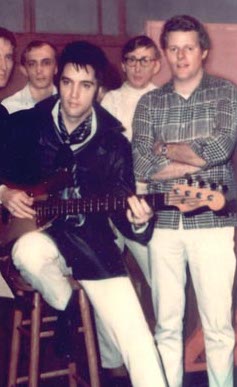
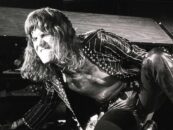
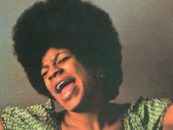
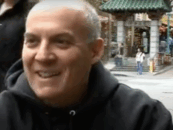
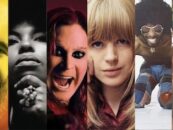

10 Comments so far
Jump into a conversationClearly he should be in the Rock and Roll Hall of Fame in the same category as Leon Russell. His contributions are immense.
For years I’ve been wondering who played the principal electric guitars on “Drift Away”, “Hooked on A Feeling” and so on. The answer came in a guitar shop in Austin Texas. I was checking out a sitar guitar and a gentleman told me Regi Young the musician who Originally recorded the riffs that I was emulating had just passed away.
I agree with The Csar that, realistically, Young should be in the R&R HOF, but, unfortunately, major contributions to the essence of R&R are not what the hall is all about. Apparently, it’s just about how many records you sold. And as it turns out, it apparently doesn’t even have to be about rock n’ roll. Pathetic!
I think it’s better his name is not in the R&R hall of fame. For God’s sakes, he would be in the company of the likes of Bon Jovi…
Excellent book on this subject and era of music is “Memphis Boys” – The Story of American Studios; by Roben Jones.
You were right=I did not know Reggie Young by name, but by the songs you mentioned. I
wonder if George Harrison introduced him to the sitar…hmmm.
The guitar licks on “Drift Away” alone should qualify Reggie Young for the RRHOF. (However, the Hall doesn’t seem to give a damn about actual rock ‘n roll music–or quality. After all, they put Madonna and Patty Smythe in there, so maybe Mr. Young’s memory is better left alone.)
Patti Smith, not Patty Smythe. Two different people.
Reggie Young’s incredible body of work is being explored via the ongoing Reggie Young Discography Project here: http://souldetective.com/discography.html
Come join us!
He’s all over the pop and rock tunes of 70’s. A surprise was playing along with Herbie Mann on Memphis Underground ! Mann always had a tight accomplished band behind him, and that album is a rockjazz classic.